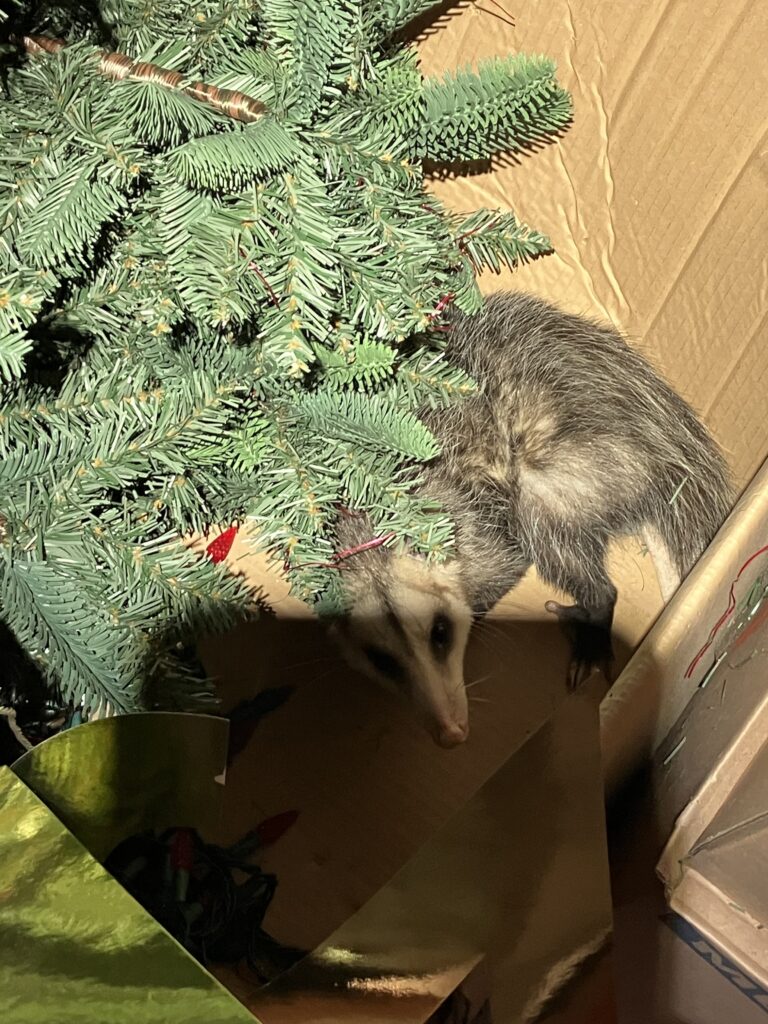As winter approaches and cold weather settles in, animals are looking for places to stay warm. There are a number of ways that nuisance wildlife will den or nest on our properties and in our homes, and there are a few measures that can be taken to help prevent and address these behaviors.
Like humans, critters prefer to stay warm and protected from the elements during cold weather. Attics and crawlspaces provide wildlife with warmth, nesting materials, and safety they need to survive during cold temperatures.
Common Winter Pest Animals

The most common pests we see moving indoors during the colder months are squirrels, rats, mice, raccoons, and opossums. None of these animals must hibernate. So if they are in your home to escape the cold weather, they’ll continue to be a nuisance.
Bats in the winter can pose a unique problem. Some bat species hibernate while other species migrate. If you live in a colder climate, you might have hibernating bats in your attic.
We do not remove hibernating bats, we will repair everything on the structure with the exception of where the bats are roosting until temperatures warm up and the bats start moving again. There are some parts of the U.S. that will have migrating bat problems. For example, homeowners in the Rio Grande area of Texas can have migrating bat problems. In those cases, we can remove bats immediately.
How to Prevent Nuisance Animal Problems During the Winter
It is important to keep a well-manicured lawn year-round, but especially during seasonal changes. Piles of leaves, debris and overgrown bushes and branches can offer a warm, safe environment for critters to nest or den. Additionally, keeping all food/household waste in tightly sealed garbage bins, along with keeping up any outdoor pet food will help deter nuisance wildlife from being attracted to the property.
It’s crucial to conduct routine inspections of your property and to have any entry points sealed by a wildlife control professional to stop and prevent unwanted pests from coming in.
All structures, whether houses, apartments or commercial properties, can have a variety of entry points for pests to make their way inside for warmth and shelter. Chimneys, ground and roof vents, soffits, rooflines, decks and siding all have different types of intentional and unintentional gaps as a part of their structures. As a reference point, both mice and bats can get into spaces less than an inch large.
Costs of Nuisance Wildlife Damage
Nuisance animals can cause hundreds or even thousands of dollars worth of damage to wood, plastic, metal, and insulation in your home such as electric wiring, plumbing pipes. They can also cause this damage very quickly. If you believe you have a nuisance wildlife issue, it is recommended to call a wildlife control professional immediately. This winter, stay one step ahead of these critters and take the proper steps to transition your home to keep the warmth in and the critters out!
About the Author

Meg has over 13 years of experience in the wildlife industry. She started as a wildlife technician and was a district manager and technical training manager supporting the Southeast Region. She currently is one of the company’s wildlife training managers. As one of the training managers, her primary focus is special projects and leading Women in Wildlife.